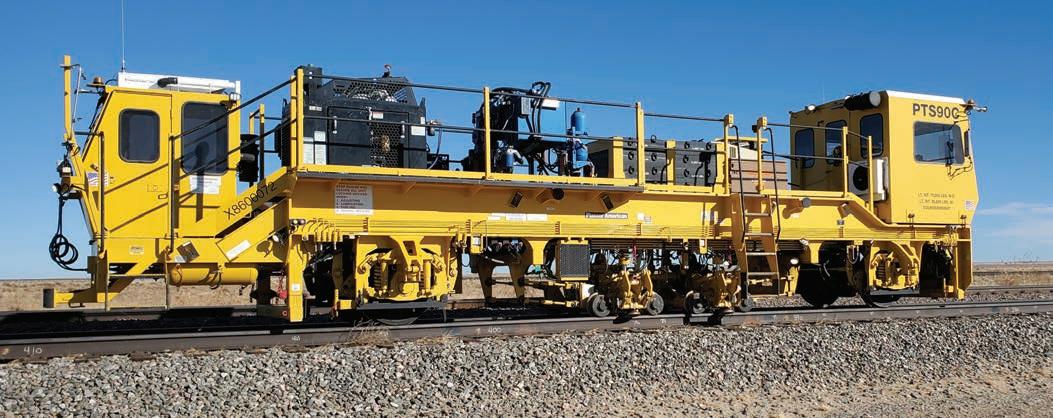
4 minute read
Ballast Compaction with Dynamic Track Stabilizers
Relative E ectiveness of Ballast Compaction with Dynamic Track Stabilizers vs. Slow Order Tonnage
Stephen Wilk, Principal Investigator I MxV Rail, Pueblo, CO
MxV Rail (formerly TTCI) tested the ballast compaction ability of a truck-based Dynamic Track Stabilizer (DTS) against accumulated tonnage under speed restriction in a heavy axle load (HAL) environment. Two tie types and DTS down-pressures were evaluated both in terms of lateral tie resistance and track settlement.
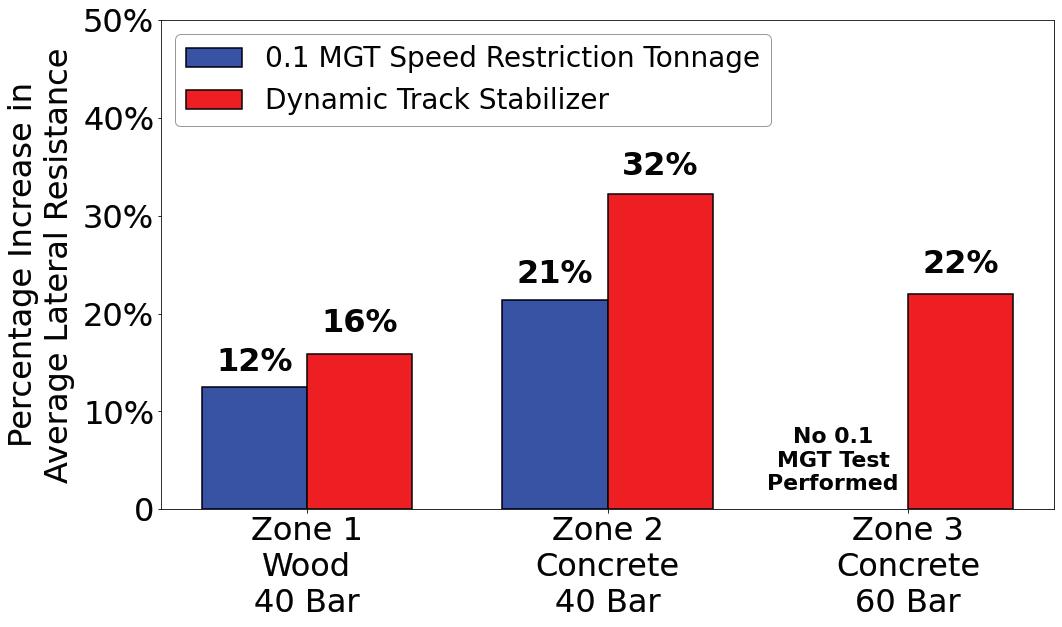
The loosening of ballast particles during tamping and other ballast maintenance activities can reduce the ballast particle interlock strength, thereby reducing lateral track strength. Reduced lateral strength increases the risk of track buckling in continuously welded rail (CWR) track, and trains are typically put under a speed restriction (also known as slow order tonnage) until the ballast compacts. Ballast compaction can occur in one of two ways: through train tonnage—typically the first 0.1 million gross tons (MGT)—or through vibratory compaction using a DTS. If a DTS is used following surfacing, the number of trains requiring speed restrictions is significantly reduced from the number required to accumulate ~0.1 MGT (~6 to 10 trains or more) to one train.
In the 1990s and 2000s, multiple DTS tests were performed using heavier DTS machines.(1) Recent tests were performed to ensure a similar benefit would be observed with lighter DTS systems that could be moved by truck from one location to another and were more versatile than their heavier counterparts. Additionally, it was important to understand the effect of different tie types and DTS down-pressures. This article presents the results of a DTS test that occurred at the Transportation Technology Center, (TTC) in Pueblo, CO, in fall 2021.
Test Layout
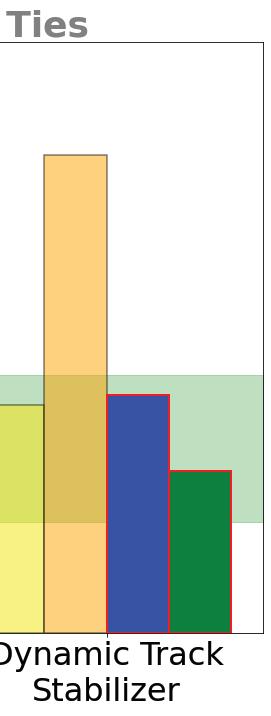
The DTS was tested on three different tangent track zones. Zone 1 consisted of wood ties, while Zones 2 and 3 consisted of concrete ties. The DTS (Figure 1) applied a down-pressure of 40 Bar (580 psi) in Zones 1 and 2 and a heavier downpressure of 60 Bar (870 psi) in Zone 3. Down-pressures of 80 to 90 Bar (1,160 to 1,305 psi) were tested with the heavier DTS in the past.
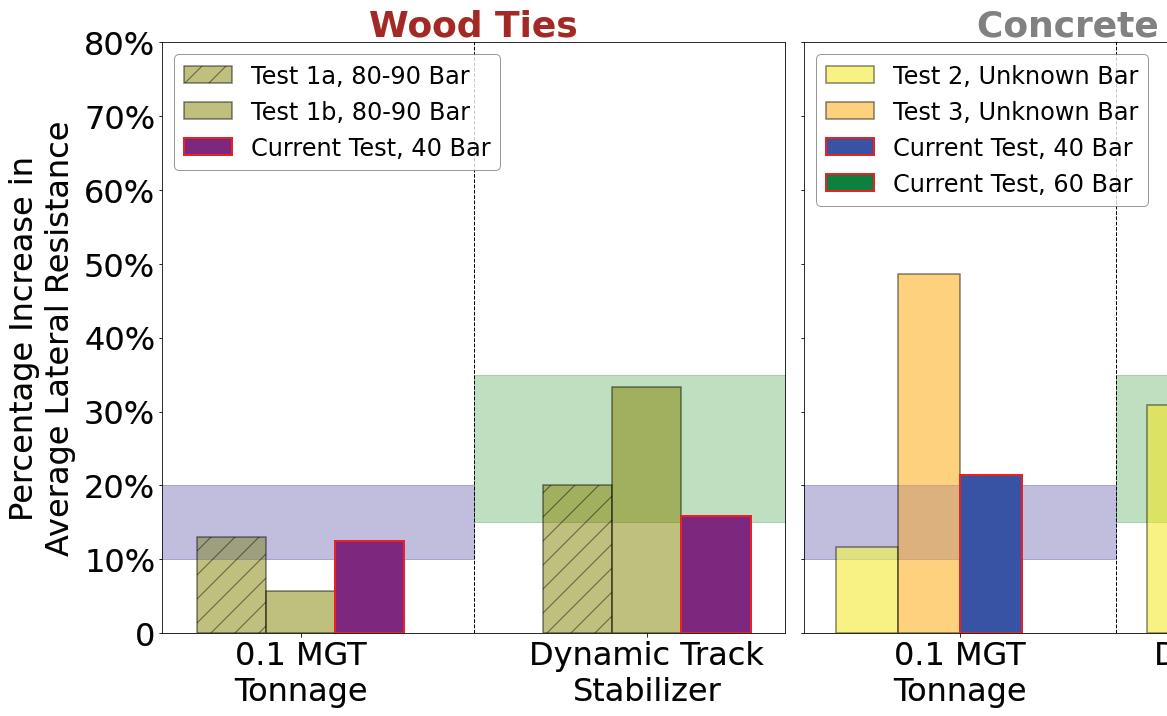
A similar test, but with HAL slow order tonnage, occurred in Zone 1 and Zone 2 in fall 2020 and was used for comparison. (2) The ballast in all three sections was clean, but the wood tie section ballast may have had less texture, and therefore, less interlock.(2) The ballast shoulder and crib height varied between and within the test zones, but these parameter variations were accounted for in the lateral tie resistance results using historical equations that have been shown to represent the change in ballast shoulder width and crib height.(3)
Measurements
To assess ballast compaction, the lateral tie resistance and track settlement were measured. Lateral tie resistance was measured by performing single tie push tests (STPTs) immediately after tamping and after stabilization. STPTs measure the lateral resistance of a single tie. The test is conducted by removing the fastening system, lifting the rail, and pushing the tie with an actuator. The peak force within 0.25-inch of lateral tie displacement is used as the output. Unloaded track settlement was measured using top-of-rail (TOR) survey elevations immediately after tamping and then after stabilization or accumulation of 0.1 MGT.

Lateral Tie Resistance
The lateral tie resistance increase from compaction, either by slow order tonnage (2020 test) or DTS (2021 test), was calculated by taking the increase percentage from the post-tamping state. Figure 2 compares the increase percentage from the recent test for the three test sections with slow order tonnage in blue and DTS in red. The 0.1 MGT test was not performed for Zone 3. The results, which agree with historical measurements, show a slightly greater lateral tie resistance from the DTS (4 to 11 percent). These test results also suggest that tracks with concrete ties have a greater relative compaction from the DTS (22 to 32 percent) than tracks with wood ties (16 percent). For DTS only, Zone 2 (concrete ties, 40 Bar) provided a greater increase in lateral resistance than Zone 3 (Concrete Ties, 60 Bar), suggesting the lower down-pressure provided a greater lateral strength. The reason for this difference is unclear.
To add historical context, Table 1 and Figure 3 show the compiled results of all testing mentioned in the available literature.1 The tests are separated by tie type (wood and concrete), and the down-pressure, if known, is shown in the legend. Other factors, e.g., ballast condition, tie texture, etc., may play a role, but these factors are not consistently documented in previous tests so they cannot be compared.
While these test results show a wide variation in lateral resistance increases, general patterns can be observed. First, the DTS consistently produces a similar or greater increase in lateral tie resistance than slow order tonnage for all tie types and downpressures. This observation is important as it demonstrates the effectiveness of DTS systems while indicating their impact on a railroad’s average train velocity. The shaded regions in Figure 3 show the general range of lateral resistance increases with slow order tonnage ranging from 10 to 20 percent while the DTS increases ~15 to 35 percent.
Second, concrete ties generally show a slightly greater lateral resistance than wood ties. Third, when viewing all datasets, there is no recognizable down-pressure pattern. Based on the available test results, it is currently unclear if there is an optimal down-pressure, but it appears all tested down-pressures were shown to be effective.
Track Settlement
Track settlement is a more direct method of assessing ballast compaction, but it is not a direct measure of lateral tie resistance. For the 2021 test, TOR survey elevations were measured at multiple intervals, including: pre-tamp, post-tamp, and poststabilization. The tamp lift height can be calculated from the difference between the pre- and post-tamp states. The initial settlement from DTS is calculated from the difference between post-tamp and post-stabilization.
Figure 4 shows the settlement from each scenario normalizing for a 1.0-inch lift height. The initial settlement shown in Figure 4 indicates the DTS generally provides greater or equal settlement when compared to tonnage. This settlement agrees with the lateral tie resistance measurements: more ballast settlement should produce greater ballast particle interlock strength, and therefore, greater lateral track strength. For the DTS, the concrete tie sections did seem to have greater settlement than the wood tie section, again agreeing with lateral tie resistance values. However, the previous studies did not measure settlement, so it is unclear if this amount of settlement is consistent with historic values.

Acknowledgements
The authors would like to thank BNSF Railway and Russell Wood from Plasser for DTS support and the MxV Rail Instrumentation and Track Teams for their efforts.
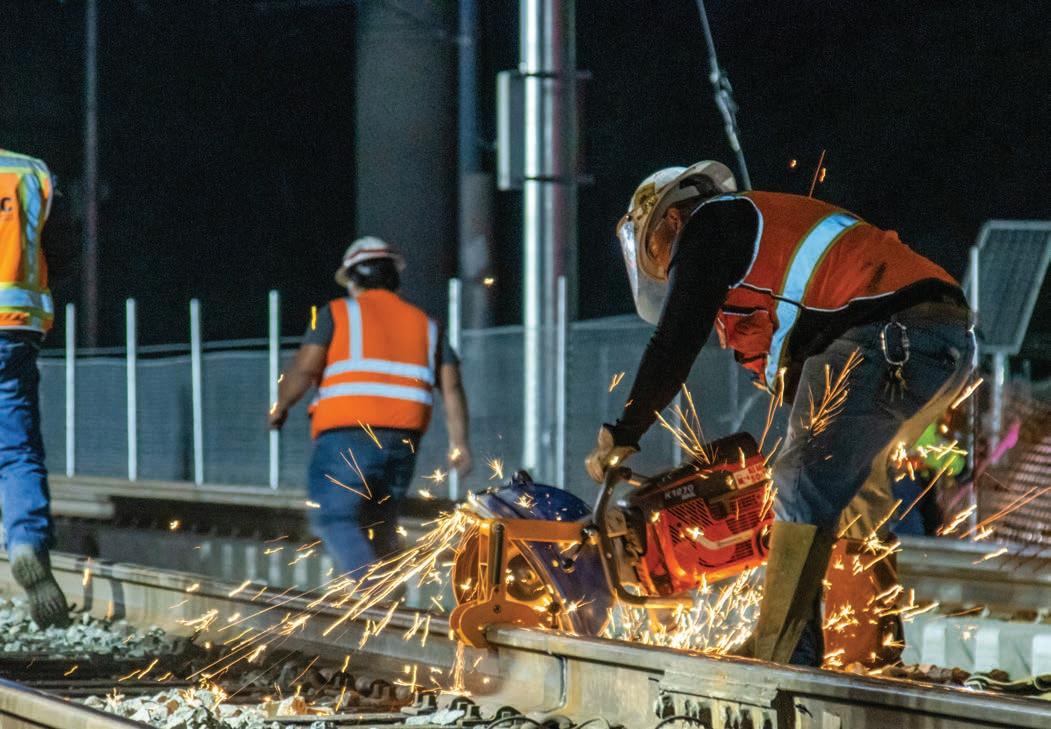
References
1. Wilk. S. (2021). “Literature Review of Lateral Track Resistance Testing.” Technology Digest TD21-004. AAR/ TTCI. Pueblo, CO.
2. Wilk, S.T. (2021). “Ballast Parameters Influencing Lateral Track Resistance.” Technology Digest TD21-030. AAR/TTCI, Pueblo, CO
3. Kish, A. and G. Samavedam. (2013). “Track Buckling Prevention Theory, Safety Concepts, and Applications.” DOT/FRA/ORDE-13/16. Washington DC.









